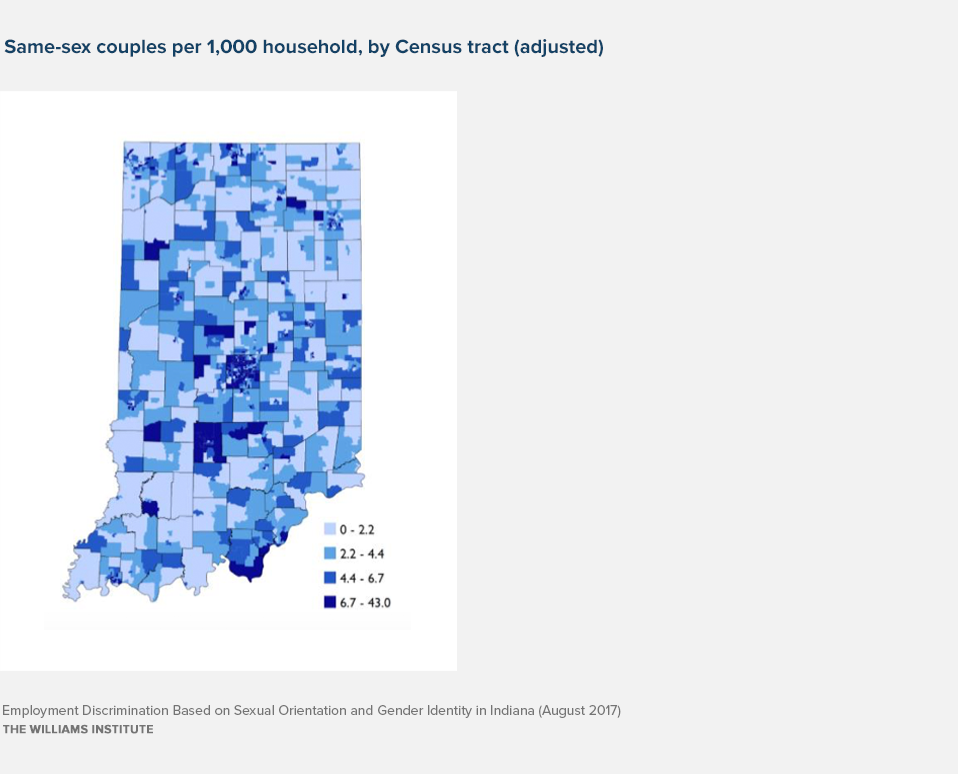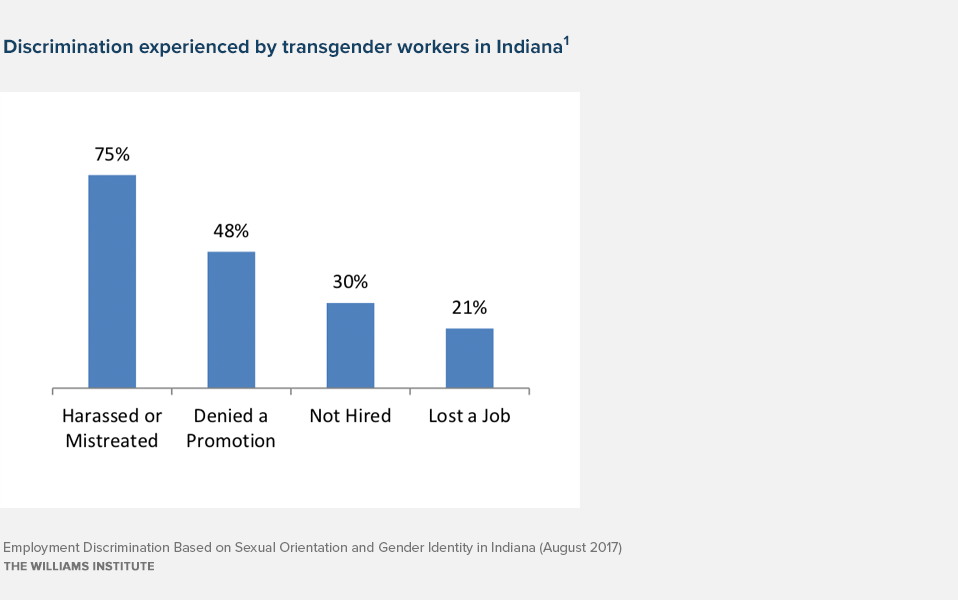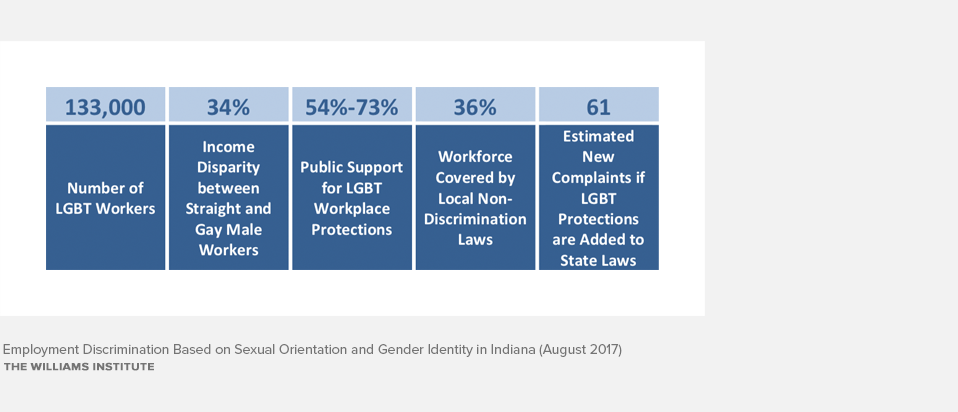Executive Summary
More than 4% of the American workforce identifies as lesbian, gay, bisexual, or transgender (LGBT). Approximately 133,000 of these workers live in Indiana. Indiana does not have a statewide law that prohibits discrimination based on sexual orientation or gender identity in employment.
This report summarizes recent evidence of sexual orientation and gender identity employment discrimination, explains the limited current protections from sexual orientation and gender identity employment discrimination in Indiana, and estimates the administrative impact of passing a law prohibiting employment discrimination based on these characteristics in the state.

Findings of the National Transgender Discrimination Survey

Data Source: National Transgender Discrimination Survey, Indiana Results, National Center for Transgender Equality & Gay and Lesbian Task Force.
Key Findings
LGBT People in Indiana Experience Discrimination and Harassment in the Workplace
- In total, there are approximately 192,105 LGBT people aged 16 and older in Indiana, including 133,000 who are part of Indiana’s workforce.
- Instances of employment discrimination based on sexual orientation and gender identity in Indiana have been documented in court cases and administrative complaints. Examples include instances of discrimination against public and private sector workers.
- Surveys indicate that discrimination against LGBT workers is persistent and prevalent. For example, a 2015 Human Rights Campaign survey found that 47% of LGBT people reported that they had experienced employment discrimination, and a 2013 Pew Research Center survey found that 21% of LGBT respondents reported having been treated unfairly by an employer in hiring, pay, or promotions.
- When transgender people are surveyed separately, they report similar or higher levels of discrimination. In response to the National Transgender Discrimination Survey, 75% of respondents from Indiana reported experiencing harassment or mistreatment at work, 30%reported losing a job, 21% reported being denied a promotion, and 48% reported not being hired because of their gender identity or expression at some point in their lives.
- Census data show that in Indiana, the median income of men in same-sex couples is 34% lower than men in different-sex marriages.
Local Governments and Private Employers in Indiana Have Made Efforts to Protect LGBT People from Workplace Discrimination and Harassment
- A gubernatorial executive order in Indiana provides protection from sexual orientation and gender identity discrimination for state government employees. The executive order protects 108,000 state employees—3% of Indiana’s workforce—from discrimination based on sexual orientation or gender identity.
- At least twenty-one localities in Indiana have adopted ordinances prohibiting public and private sector employment discrimination based on sexual orientation and gender identity. These local ordinances and policies protect approximately one-third (33%) of the state’s workforce from discrimination based on sexual orientation and gender identity.
- Private companies may adopt internal non-discrimination policies to improve recruitment and retention of talented employees, to increase employee productivity and customer satisfaction, or to attract a larger customer base. Of the seven Fortune 500 companies headquartered in Indiana, six have employment non-discrimination policies that include sexual orientation and five also include gender identity in their policies. Additionally, several of Indiana’s largest universities prohibit employment discrimination based on sexual orientation and gender identity including Indiana University, Purdue University, Indiana State University, and Ball State University.
Public Opinion in Indiana Supports the Passage of Non-Discrimination Protections for LGBT People
- Four polls of Indiana residents conducted in 2015 and 2016 found that 54% to 70% of respondents supported adding protections for LGBT people to the state’s non-discrimination law.
- In response to a national poll conducted in 2011, 73% of those polled in Indiana said that Congress should pass a federal law to prohibit employment discrimination based on sexual orientation and gender identity.
- In addition, other polls have found that 79% of Indiana residents think that LGBT people experience discrimination in the state.
A Statewide Law Prohibiting Discrimination Based on Sexual Orientation and Gender Identity in Indiana Would Not Be Administratively Burdensome or Costly to Enforce
- Expanding the state’s existing non-discrimination law to prohibit employment discrimination based on sexual orientation and gender identity would result in approximately 61 additional complaints, on average, being filed with the Indiana Civil Rights Commission each year.
- The anticipated new complaints based on sexual orientation and gender identity could likely be absorbed into the existing system with no need for additional staff and negligible costs.
Download the full report


